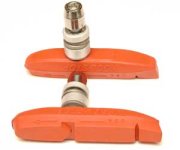Chalo
100 TW
-dg said:full-throttle said:An extra 500g per wheel. You decide. I'm just pointing it out.Floont said:I see no significant disadvantage due to weight between hydraulic and cable actuated disc brakes.
Could you please provide a link to a hydraulic disc system that is 500g lighter per wheel than, for example, an Avid BB7?
Avid Juicy hydraulic disc 395g with 85cm hose
Avid BB7 mechanical disc 329g, Avid Speed Dial lever 88g, cable + housing 62g per 85cm, total 479g
Equivalent systems by the same manufacturer, 84g weight difference per wheel. Cable actuated is cheaper.
He's wrong.



